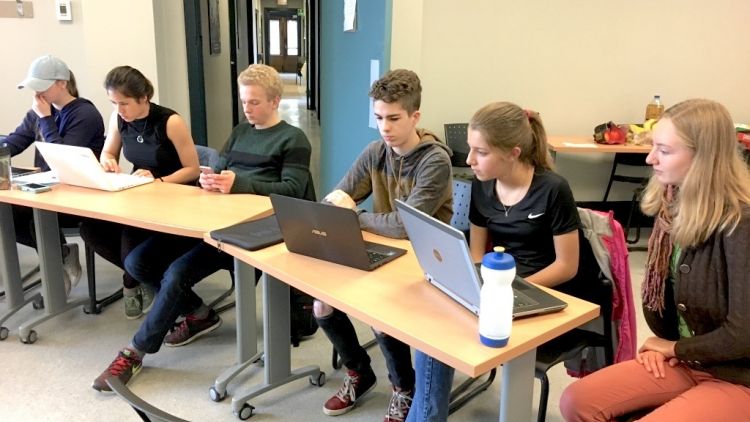GreenLearning’s Climate Action 150 Project is now five years in the rear-view mirror. It was an innovative project that involved teaching about climate change. It also included various components, all with a goal of engaging young people in building a low-carbon and prosperous Canada. However, a lot has changed since 2017 when the project happened. The 2018 IPCC report warned of a global 1.5 C increase and pointed to drastic steps required to mitigate the effects of climate change on the planet. In addition, the COVID-19 pandemic dramatically altered every component of the education system leading to rolling school closures, the rise of online learning and a heavy use of technology to stay connected.
Being nimble and responsive in its approach, GreenLearning stays ahead of emerging environmental solutions and education trends in order to provide young people with a rich learning experience. Since Climate Action 150, the organization has used key learnings and takeaways from the project to improve its climate education programs and equip educators in teaching about climate change. In making these adjustments, we have not been alone. We have worked with classroom educators, young learners and partner organizations to achieve effective climate change education.
The key lessons and takeaways from Climate Action 150, which are listed below, provide a learning framework that any educator can use to teach students about climate change. This framework creates impact and each component works well with GreenLearning’s Challenges.
Online Events
Social Media
Community Action Projects
Measuring Results
Online Events
To link more than 20 classes participating in Climate Action 150 from across Canada, we used video-conferencing. This format was also used to run training sessions, expert workshops, student presentations, seminars, and the National Virtual Town Hall. GreenLearning developed a skill-set and vision that allowed the organization to adapt to the COVID-19 pandemic. By increasing our online sessions in 2020, we were able to support teachers during the transition to online learning during the pandemic. Our virtual sessions continue today for both teacher professional learning and in-class presentations with up to 30 educator sessions and 54 student sessions. To check out our current and past events, click here.
The topics, ranging widely across elements of climate change education included:
A Full School Approach to Sustainability - Faculty of Education
Get Real: Measurable Environmental Action for the Classroom - Science Teachers' Association
A Simple Model for Teaching the Energy Transition -Teaching About Climate and Energy Solutions webinar
Learn Where You Are: Experiential, Place-Based Learning for Grades 4-8 - Teachers’ convention
Addressing Secondary Eco-Anxiety Through Solutions-Focused Challenges - Teachers’ convention
Preparing Students for Their Future Energy Careers - Teachers’ convention
Speak for Trees - classroom presentation
Collective Climate Action - youth forum
Energy Conservation - guest speaker
The Secret Life of Plastics - Earth Day event
Social Media
During the various video conferences in Climate Action 150, we used social media to connect the students and presenters together. GreenLearning invited students to post their comments and question to Twitter using the hashtag #Climate150 and #ActionClimatique150. The meeting host would periodically go to social media and share these posts with the group and allow presenters and experts including Catherine McKenna, the Minister of Environment and Climate Change to respond. This created a real team feeling and generated considerable enthusiasm among youth. Below are examples of how we continue to help students feel part of a learning team using social media.
As part of our Electrifying the Future of Transportation pilot project, Crescent Heights High School students created logos for the school’s electric vehicle retrofit and held an Instagram competition, facilitated by GreenLearning to select the best logo. Students and their friends voted on the logos by commenting on Instagram. The winning logo will be painted on the electric vehicle.
Students are sharing their updates on social media with GreenLearning regularly as they make progress on retrofitting the vintage VolksWagen vehicle. Here is a recent update.
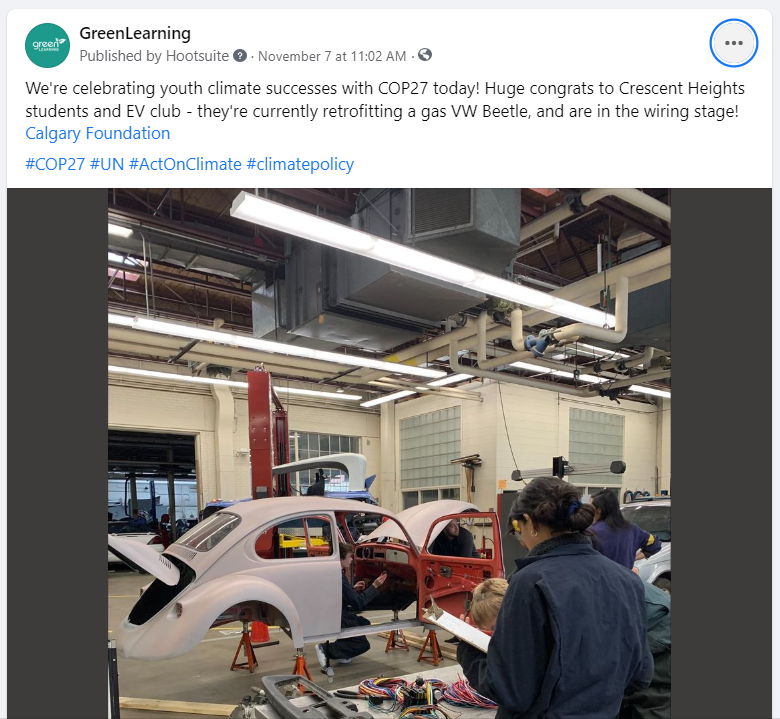
We usually invite all classes participating in any of GreenLearning’s five environmental challenges to share their activities with other learners who are participating in the challenge. In the Twitter update below, we watch students from Chris Hadfield Public School in Milton, Ontario running their solar-powered cars as part of the Energy Revealed Challenge.
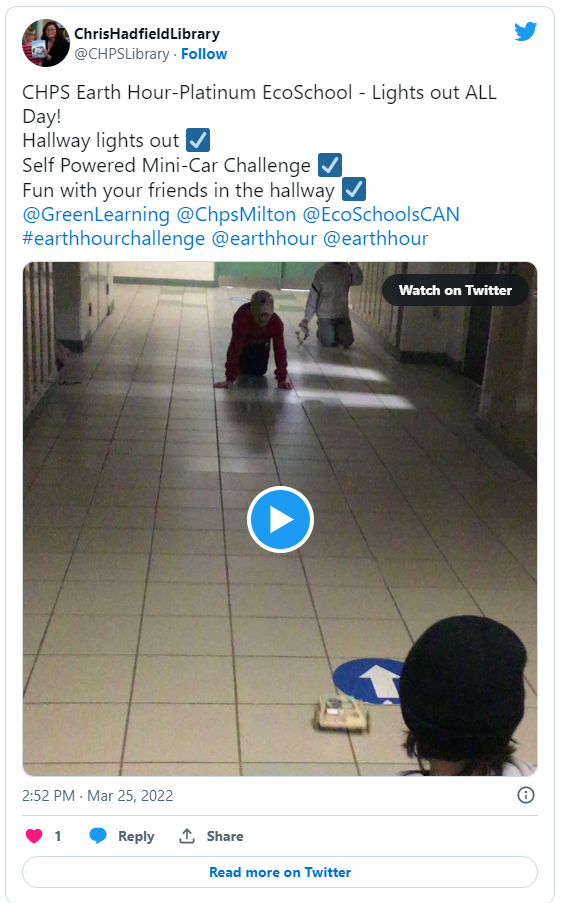
Our online presentations and workshops have continued the practice of using social media to extend the interaction. GreenLearning often gets feedback from teachers via social media like this one from the “Speak for the Trees” presentation which explored the connection between our daily energy use and the environment.
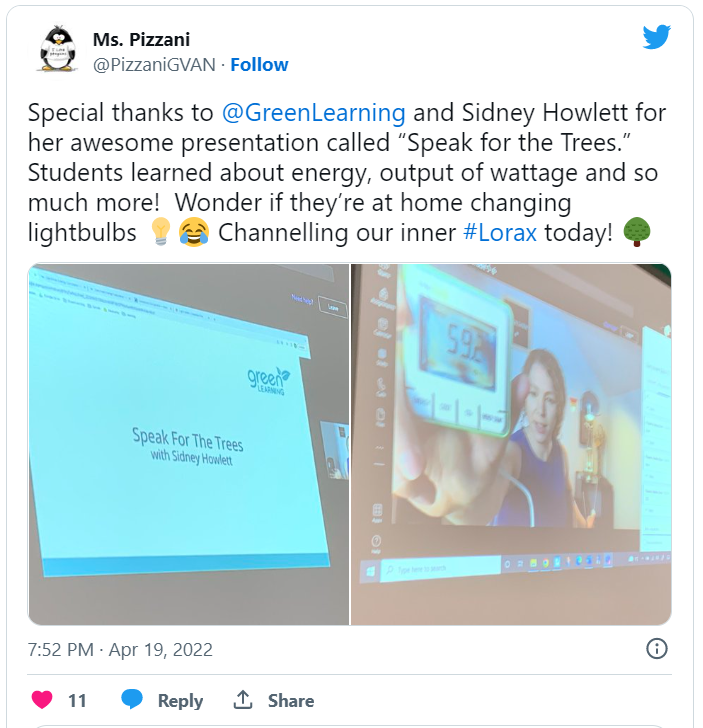
Community Action Projects
Once youth learn about climate change and environment issues, they want to do something about it. All of the Climate Action students in addition to their research and presentations, engaged in action projects within their communities. These projects took the learning beyond the classroom and into the community. Students interacted with local experts, organizations, local government and companies in their efforts to really make a difference on climate change. Here are some examples of action projects from the Climate Action 150 project.
École secondaire La Poudrière in Drummondville Québec
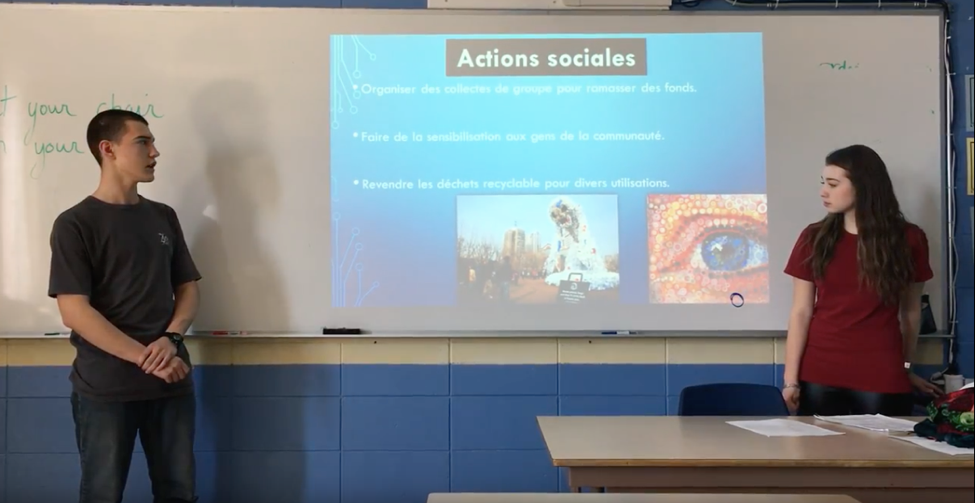
Students held a conference with the Mayor of Drummondville to talk about how climate change is affecting their community and what actions they are going to take to combat the effects. Students had made posters and flyers of their Inquiry subjects during the conference for the Mayor and other schoolmates to see.
Leamington District Secondary School in Leamington, Ontario
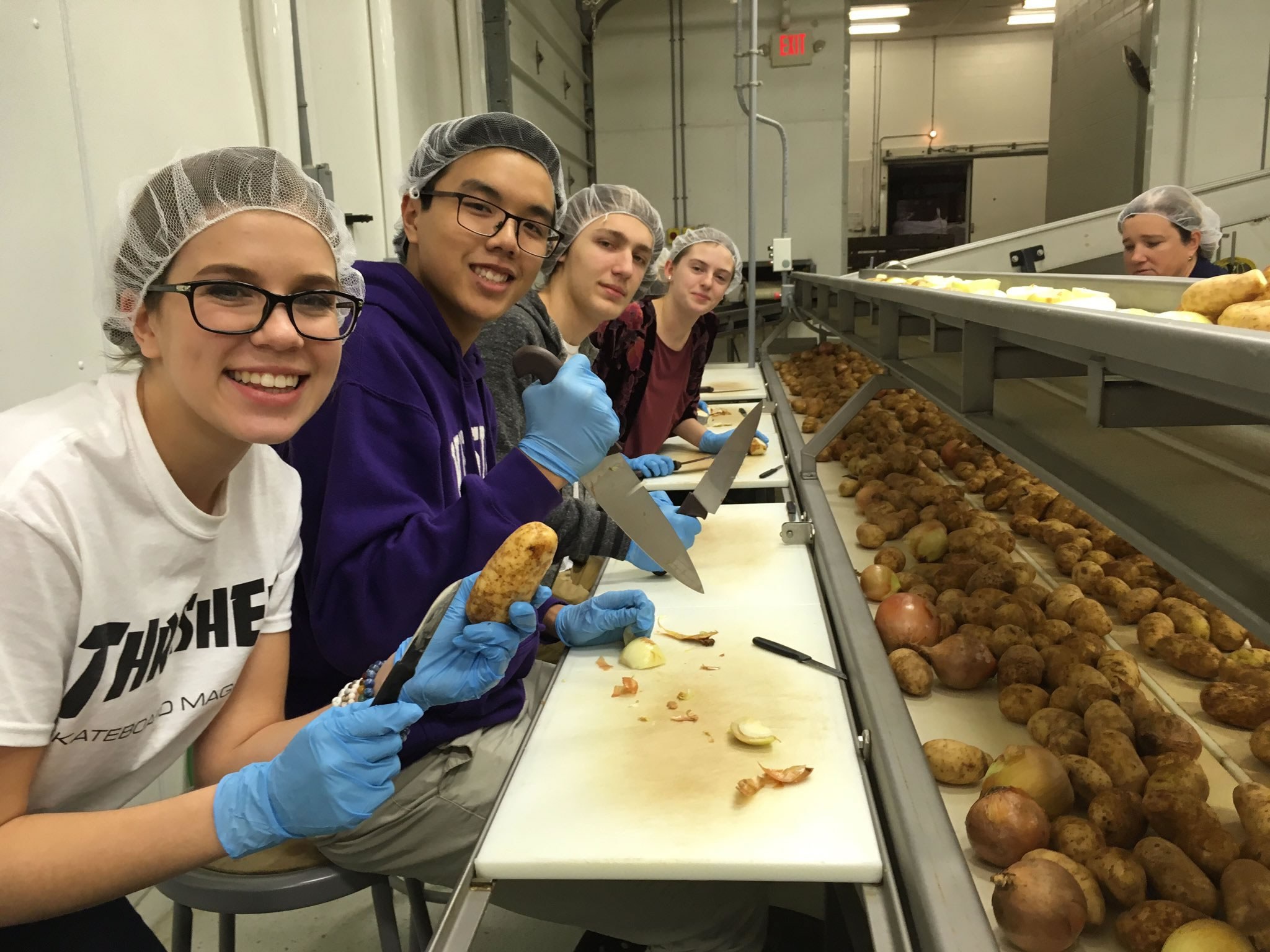
Students at Leamington District Secondary School focused their action project on the topic of food waste. They volunteered at Southwestern Ontario Gleaners, processing unmarketable fruits and vegetables into a dehydrated soup mix that was then made available, free-of-charge to food banks and relief agencies.
Carman Collegiate in Carman, Manitoba
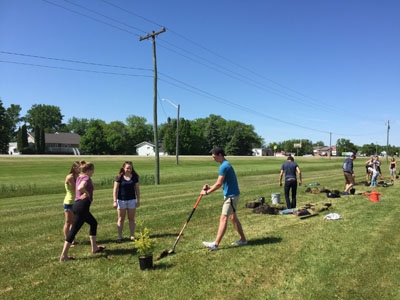
Carman’s Climate Action 150 students planted white spruce trees beside the sports field and track to raise community awareness about climate change. White spruce trees are great at sequestering carbon, which makes them a great choice for the environment.
Action or hands-on projects are a component of GreenLearning’s Challenges. In the ECO 360 Challenge, learners will develop a feasible plan that incorporates a circular economic model eliminating plastic waste from our environment. The Re-Energy Challenge has them design, build and test a working model of any renewable energy technology. In the Flood:Ed Challenge classes develop a flood resilience plan to protect their school. The Decoding Carbon Challenge empowers students to explore and propose new climate policy for Canada. The Energy Revealed Challenge is rich with examples of students taking action during their Earth Hour event.
Measuring Results
Youth may not just want to know about climate change, but they also want to know what real world impacts their actions have on reducing greenhouse gas emissions and the impacts of climate change. As part of Climate Action 150, GreenLearning created a web page that allowed young people to make commitments in their everyday lives to reduce the emissions of greenhouse gasses
As part of Climate Action 150 a GHG Calculator was created. The top actions among the 27 that youth could commit to included:
Taking shorter showers
Composting
Turning the heat down
Turning of TV and computers
Within the short time span of Climate Action 150, the participating students made commitments to reduce greenhouse gas emission by 692,696 kg per year. Various reports broken down by actions, provinces, and schools are available online.
The Energy Revealed program makes energy visible, and will turn youth into expert energy managers. It includes Electrical Energy Calculators which allow learners to discover the economic and environmental impacts of using everyday electrical devices. Students input the watts and the minutes per day of use of any electrical device and the calculators display the kilowatt-hours of energy used, the greenhouse gas produced and the electrical cost in a year. The calculators support the 30+ activities and lessons in Energy Revealed.
Climate Action 150 may have happened five years ago but its legacy lives on in the form of GreenLearning’s Challenges. If you are an educator who is curious about or intent on galvanizing young learners for climate and environmental action, then consider participating in a challenge today. Take advantage of our free and unique learning framework that engages and empowers students to make a lasting impact in their own lives, schools and communities.


